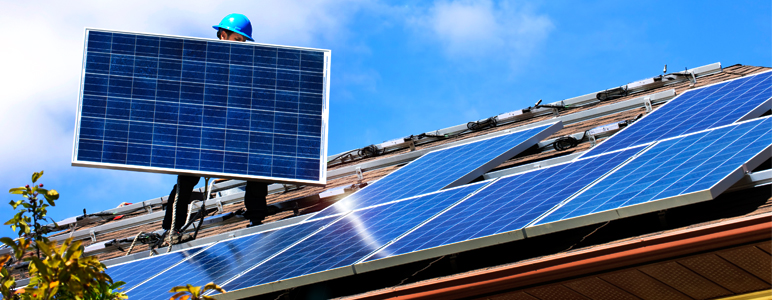


The California Energy Commission’s recent decision to require rooftop solar photovoltaic (PV) systems on most new homes has engendered praise from some quarters and criticism from others. Some see this as a positive force, helping to reduce the cost of solar and contributing to greenhouse gas (GHG) emission reduction. Others despair policymakers’ tendency to choose technology winners and losers and argue that the least-cost choices are usually best.
Regardless of where you are in the cheering section, allow me to offer several red flags to watch for when people put forth critical perspectives on requiring rooftop solar.
- When someone argues that rooftop solar is foolish because central station solar is cheaper, they are ignoring, or at least minimizing, several import factors, including the difficulty in siting central station solar, the decade-long process of making such a project happen, the direct land use impacts of that technology and the need for more transmission lines and their related land-use impacts.
- Beware of critics who say central station solar is the only way to go. There are strong arguments in favor of central station solar, but it is not credible to suggest that we will meet all our electricity needs with big solar farms in the desert. It isn’t an either/or situation. We need both.
- When someone criticizes the use of renewables by suggesting it could lead to higher bills, what is implicit is that we should continue relying on fossil generation that appears to be cheaper, even though much of that apparent price advantage results from the fact that the generators are not paying for environmental externalities such as air and water pollution and GHG emissions.
- When people argue that requiring rooftop solar is bad because it will reduce grid-based electricity sales and thereby leave the remaining customers with higher rates to cover fixed costs, think about what they are saying: a policy is bad if it reduces the demand for electricity from the grid. Should we stop encouraging more efficient use of energy?
- Beware of arguments based on the Duck Chart. This graph suggests that with the introduction of more solar, grid operators are stuck with more renewables than they can use during certain hours and therefore forced to curtail its use. When the grid operators do so, it isn’t because there is more solar generation than demand. It is because so much of the grid-based generation is too inflexible to respond to changes in solar output. It’s fixing the limitations of the grid that needs our attention.
- Take care when critics raise the specter of economic inequity. The suggestion is that a program is unfair if anybody other than low-income customers might benefit. Does the possibility that middle income or higher income end-use customers who adopt PV might save money mean that a policy should be rejected? Especially when the benefiting customers paid for the benefit by buying a new home with solar?
- When people argue that putting solar on all new rooftops won’t do much to reduce GHG emissions, beware of the drop-in-the-bucket argument – a favorite of people who want to dismiss any specific strategy to reduce emissions. When it comes to reducing GHG emissions, there is no magic beanstalk that will lead us to the golden egg of a carbon-free life. Deep decarbonization requires all hands on deck.
There is no disputing that the state’s new policy is a landmark event that could set the stage for broader solar adoption nationwide. One benefit of the policy is that it can help bring down the cost of solar. It is cheaper to install solar PV when incorporated in new construction, and doing so adds to overall demand, which can support further economies of scale.
Further, the development of more customer-sited generation supports the development of microgrids that can enhance local reliability and increase the likelihood of continued access to power after a natural disaster such as an earthquake or superstorm.
Maybe there are less expensive ways to produce carbon-free electricity. But will they be deployed in time to meet long-term GHG reduction targets? And when do we stop waiting for a better widget? The time to get fully invested in solar – of all types – is now.

